Events Of The Year: Cambodia’s Biggest Annual Festivals
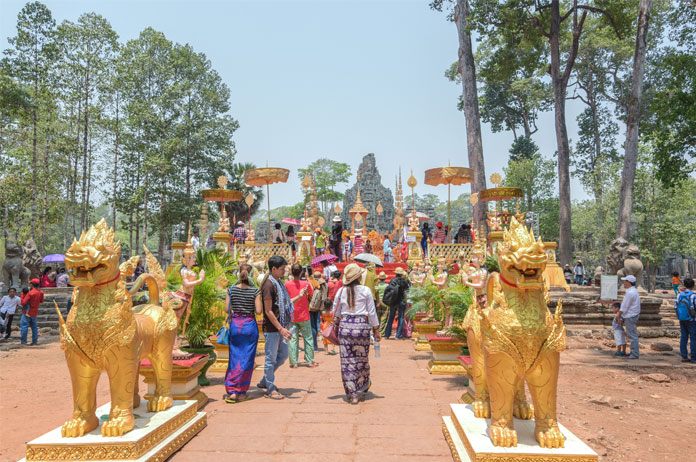
Cambodia is no doubt a festive place, enjoying a wealth of traditional and international festivals, more so than most other nations. These events bring together locals from all walks of life and unite the populace with a shared common understanding of Khmer values and traditions.
People from the provinces throng the capital to join in the celebrations and witness the spectacular fireworks displays from the Riverside. Some of these festivals are even gaining popularity with international visitors, acting as potent tourist magnets. B2B Cambodia takes a look at the most prominent Cambodian festivals of the year:
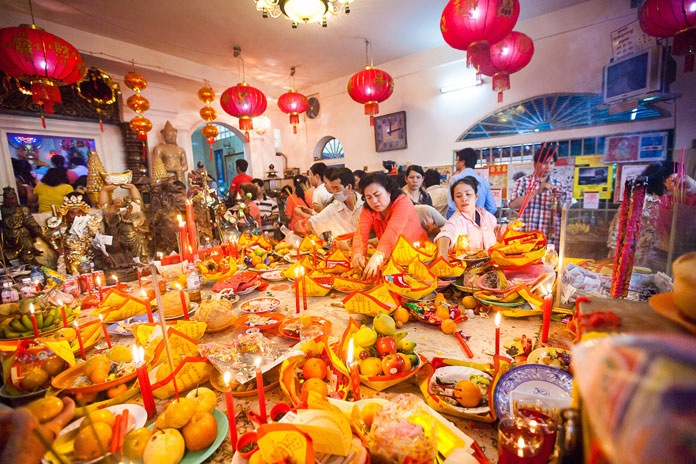
Chinese New Year (late January/early February)
Despite not being an official public holiday, Chinese New Year is widely celebrated in the Kingdom, primarily by those of Chinese descent. People across the country decorate homes and workplaces in tune with the holiday – official colours are red and yellow – preparing heavily ornamented offerings that include roast pig, drinks, cigarettes, fruits and a multitude of other treats.
As with any self-respecting Chinese celebration, fireworks play a pivotal role, with wealthier families lighting up the sky with displays. The mesmerizing dance of lion dancers can be seen across the capital for several days, and its drum accompaniment can be heard too. On the eve of the New Year, people go to local pagodas to make offerings, with Wat Phnom becoming one of the busiest spots in the capital. 2017 is the Year of the Rooster!
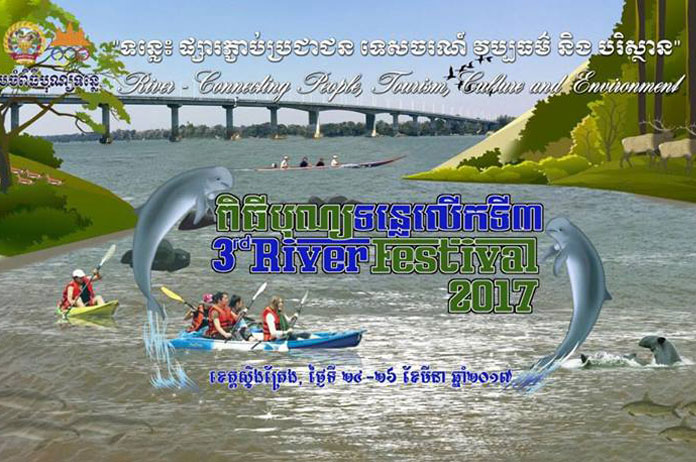
River Festival (March)
This year’s River Festival, held in Steung Treng province from March 24 to 26, reportedly attracted around 140,000 local and international tourists, making it a resounding success. Revellers had the opportunity to witness and partake in a variety of activities, such as art performances, concerts, a trade fair and sport activities, including a 5km and a 3km run that enlisted over 1,200 runners.
The celebration was conceived as part of a government strategy to increase tourism and attract investment to the Northeast of the country, particularly in eco-tourism. This year was only the third time this festival has been organised, although given its rising popularity, we should expect future iterations. The first River Festival was held in Kampong Cham in 2015 and the second in Kratie last year.
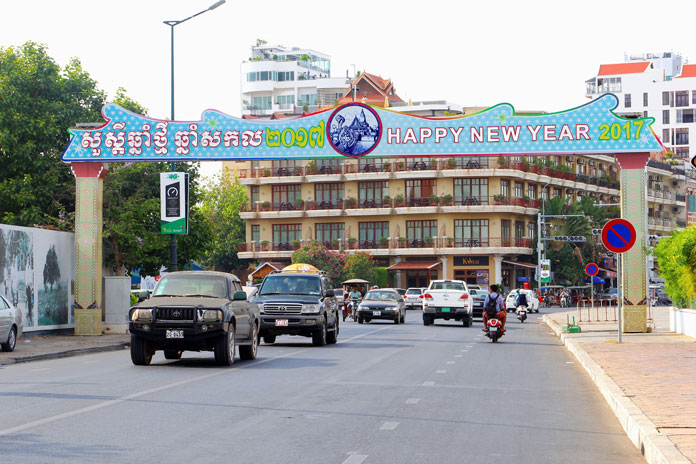
Khmer New Year (April 13-16)
Coinciding with numerous New Years across the region, this festival marks the turn of the year in the Khmer calendar as well as the end of the harvest season. Cambodians decorate their homes to please the Heaven God, and come New Year’s Eve, beautiful offerings of food, drink, and flowers, and burning incense are set on tables in front of homes. Tradition dictates that people be blessed with water during this holiday, with groups armed with small buckets of water and water pistols ready to dose passersby. Though this practice is discouraged in the city, the area around Wat Phnom still sees a lot of good natured water throwing on New Year, as well as clouds talcum powder.
This festivals is one of the happiest periods of the year in the country, with joyous children and teens playing special holiday games in open areas in the weeks that build up to New Year. Expect traffic routes to be congested on the days surrounding the holiday, and transport and accommodation booked out with a huge amount of locals travelling to their provincial hometowns. Siem Reap, meanwhile, hosts a massive cultural festival named Angkor Sangkranta, which includes live performances inside the Angkor Archaeological Park. In contrast, Phnom Penh can be beautifully quiet and calm, with many businesses closed.
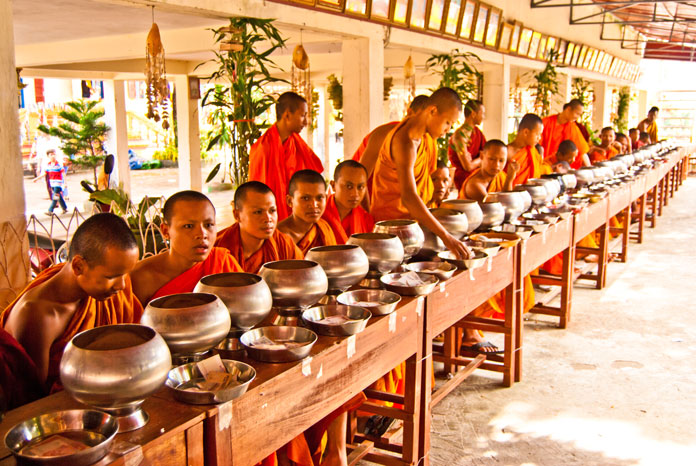
Pchum Ben (September/October)
Central to the Khmer sense of identity, the Pchum Ben festival is a holiday to honour and care for the spirits of the ancestors, who are believed to return to Earth during this time. In what constitutes one of the most colourful and photogenic periods in the Cambodian calendar, the pagodas are awash with people and offerings of food, incense and money to aid the ancestors in the afterlife. On the last day of festivities, visitors can join the crowds at the pagoda and take photos of local people in traditional attire. Women are particularly striking, donning their best traditional dresses, silks, embroidered blouses and scarves, and bearing offerings, candles and incense.
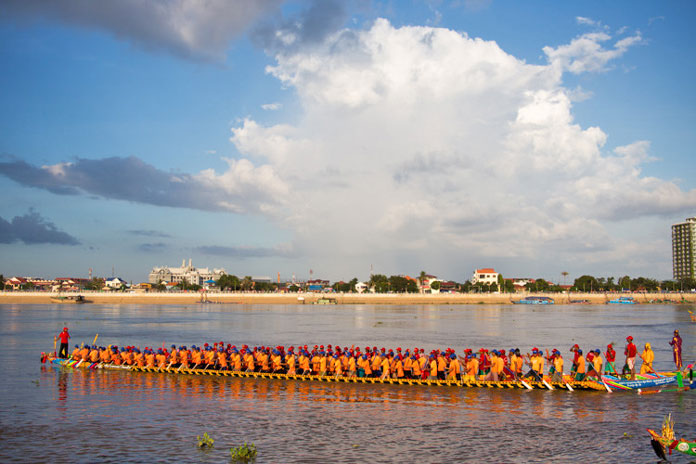
Water Festival (October or November)
Over three days, starting with the last full moon in October or the beginning of November, hundreds of thousands of people from all from all over the country gather around the banks of Tonle Sap river in Phnom Penh to witness the vibrant boat races, with dozens of dragon boats, each carrying sizeable crews of oarsmen, competing for top honours. Locals, visitors and vendors crowd the riverfront to experience the races, and the whole area takes on a carnival atmosphere.
Fireworks and a water-borne parade of illuminated floats – each representing the various government ministries – cap off events in the evening. This important festival marks the changing of the flow of the Tonle Sap and is also seen as a way to thank the city’s rivers for providing the country with fertile land and abundant fish. A smaller version of the festival often takes place in Siem Reap as well as other provincial towns.
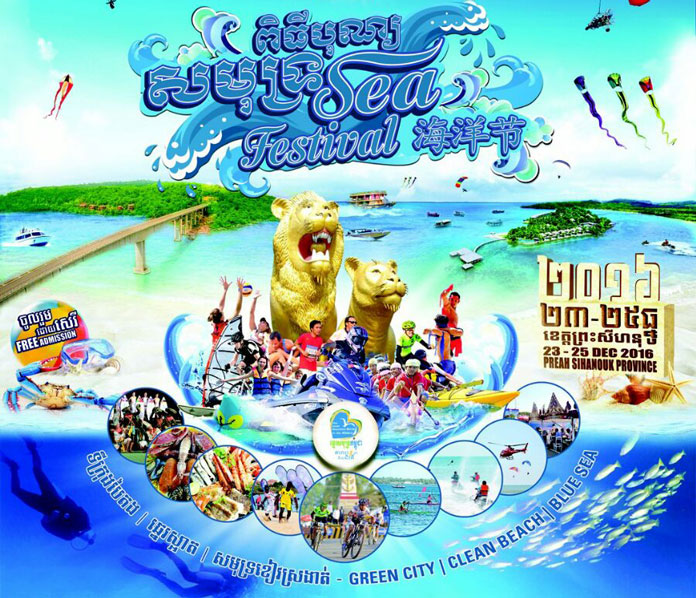
Sea Festival (December)
Drawing tens of thousands of people to the beaches of Sihanoukville in its last iteration, the Sea Festival has earned a spot among the most popular and anticipated events in the Cambodian calendar. Organised to commemorate Cambodia’s entry into the World’s Most Beautiful Beach Club in July 2011, this event has steadily grown to become one of the premier year-end fixtures.
Each of the Kingdom’s four coastal provinces – Koh Kong, Preah Sihanouk, Kampot and Kep – rotate hosting duties, with festival-goers enjoying a heady mix of music, acrobatic sports, traditional fighting bouts, mixed martial arts, aquatic adventures, local and international cuisines and breathtaking fireworks. The festival is often attended by the highest levels of government, including Prime Minister Hun Sen, who officiated the ribbon-cutting ceremony in Sihanoukville last year.